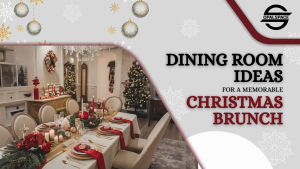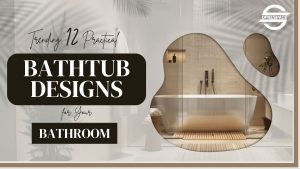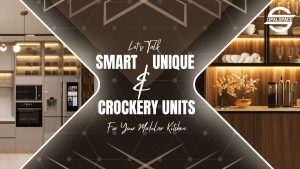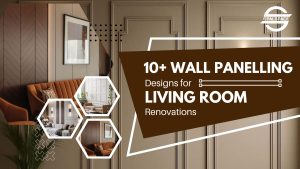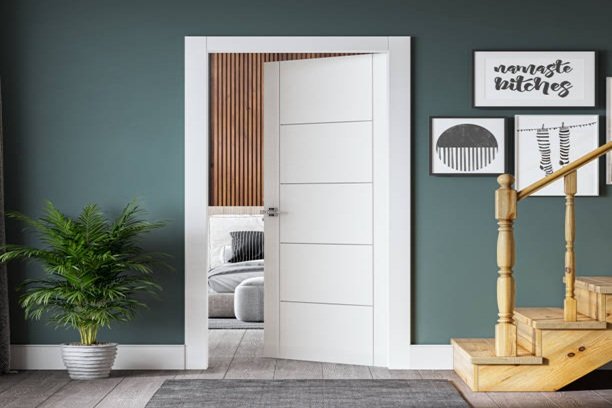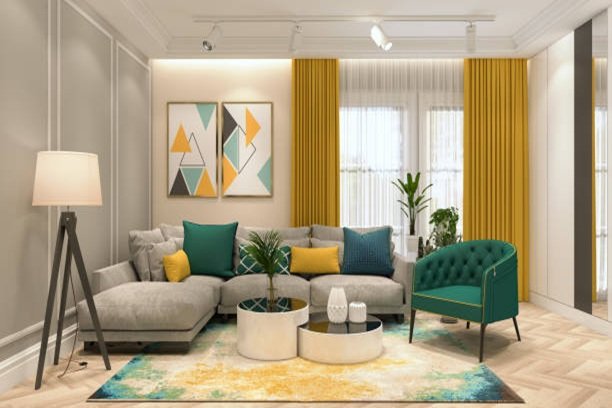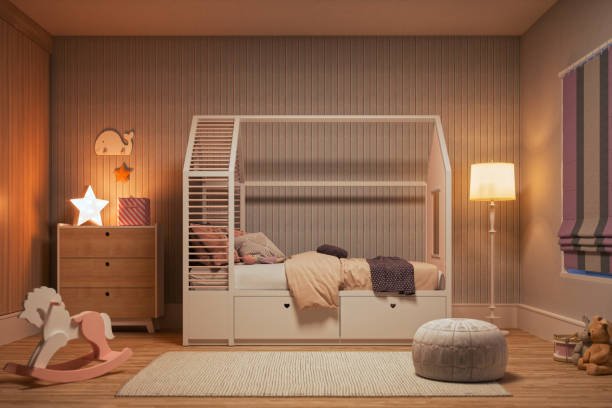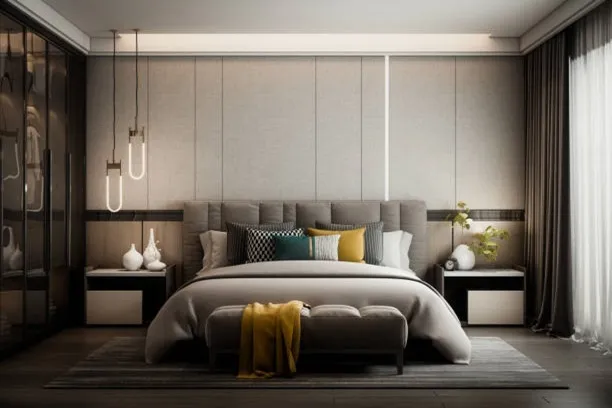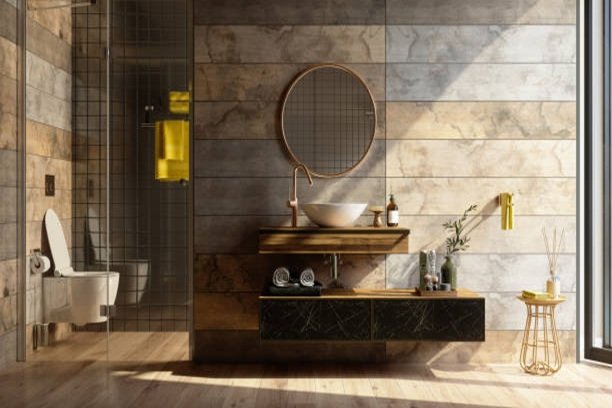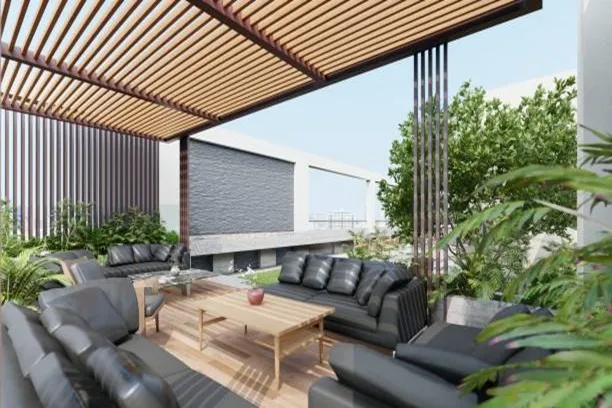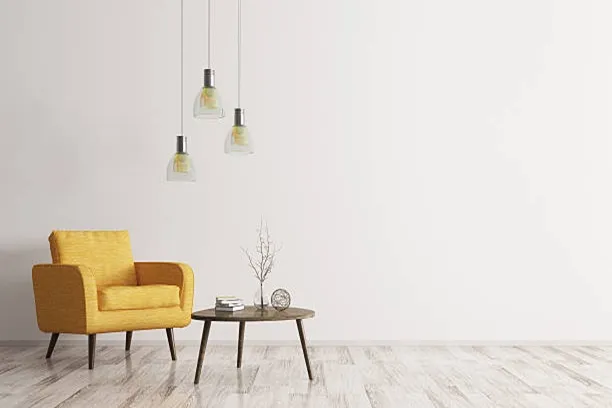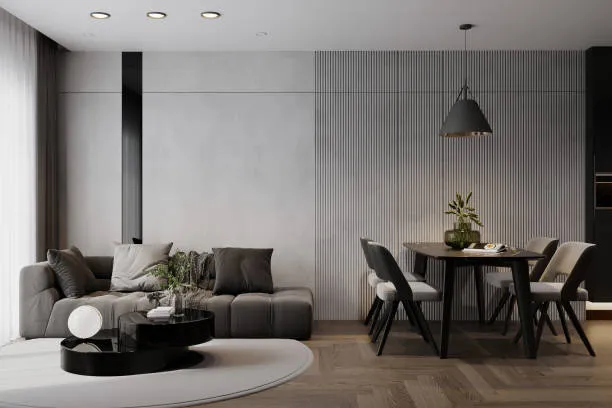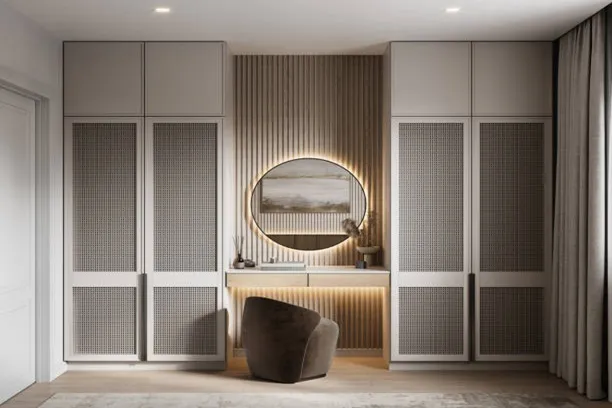Table of Contents
Benefits of Wall Panelling
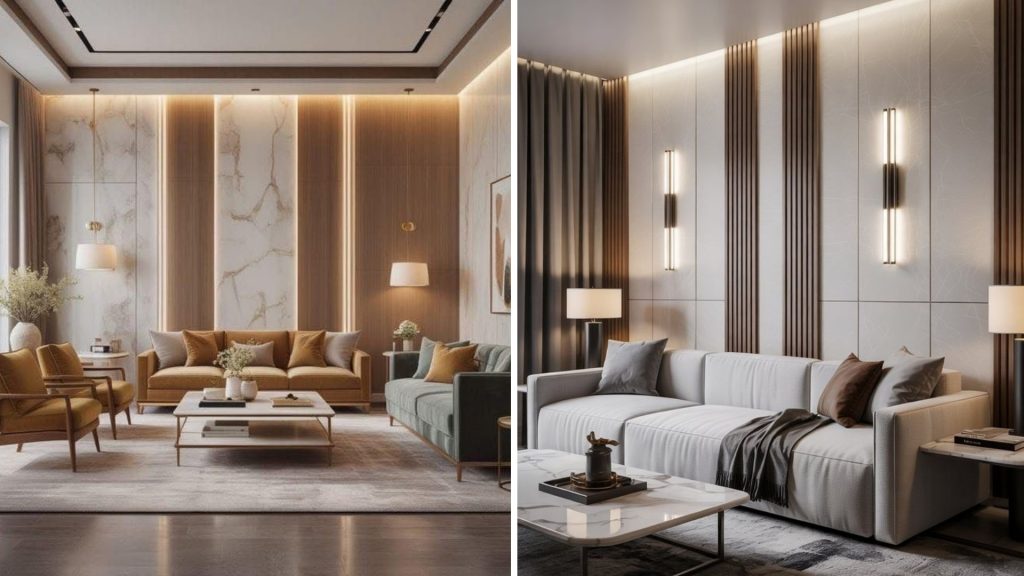
The appeal of wall panelling is rooted in its combination of form and function.
- Uplifted Aesthetics: Decorative wall panels instantly elevate a room, transforming flat, plain walls into dynamic focal points. They add architectural interest without structural changes.
- Durability and Protection: Panelling acts as a protective layer, shielding walls from scratches, dents, and impact. This is particularly valuable in high-traffic areas.
- Low Maintenance: Most wall panels, especially PVC Wall Panels, are easy to clean and maintain, requiring only a wipe-down with a damp cloth.
- Practical Concealment: Panelling effectively conceals wall imperfections, such as cracks or uneven surfaces, and can hide wiring and pipes with minimal effort.
- Insulation Properties: Certain materials, including WPC Wall Panels, provide additional thermal and acoustic insulation, contributing to a more comfortable and quieter environment.
Materials Used in Wall Panels

The choice of material dictates the panel’s appearance, durability, and cost.
- PVC Wall Panels: A highly practical and waterproof option. PVC Wall Panels are lightweight, easy to install, and resistant to moisture, making them ideal for bathrooms, kitchens, and basements.
- WPC Wall Panels (Wood-Plastic Composite): These panels combine the aesthetics of wood with the durability of plastic. WPC Wall Panels are more robust than PVC and offer better dimensional stability, suitable for both interior and exterior applications.
- Wood Wall Panelling: This category includes solid wood, veneers, and engineered wood like MDF. Wood Wall Panelling offers unmatched natural beauty and warmth, perfect for living rooms and bedrooms.
- Gypsum and MDF Panels: These are popular for creating detailed mouldings and 3D designs. They are cost-effective and can be painted to match any decor but are not suitable for damp conditions.
Popular Styles in Wall Panel Design
1. Modern Minimalist

- It aligns with the popular clean aesthetic and open-plan living. It makes a space feel larger and uncluttered.
- For living room application, large, flat-panel wall systems or subtle geometric 3D panels painted in white or grey, generally used to form a glossy backdrop for a modern media console and artwork.
- It emphasizes straight, unadorned lines and smooth, flush surfaces. Flat-panel designs are common, creating large, unbroken planes.
- Texture is introduced through repetitive, low-relief geometric patterns (e.g., linear grooves, hexagons, or simple 3D shapes) that play with light and shadow without being overpowering.
- A restrained color scheme that uses shades of white, grey, beige, and black is standard. This allows the form and light interplay of the panels to stand out.
- Common materials deployed in its making would be painted medium-density fibreboard (MDF), high-gloss acrylic or lacquer panels, and large-format veneers that mimic easy concrete or polished plaster.
2. Textured/3D
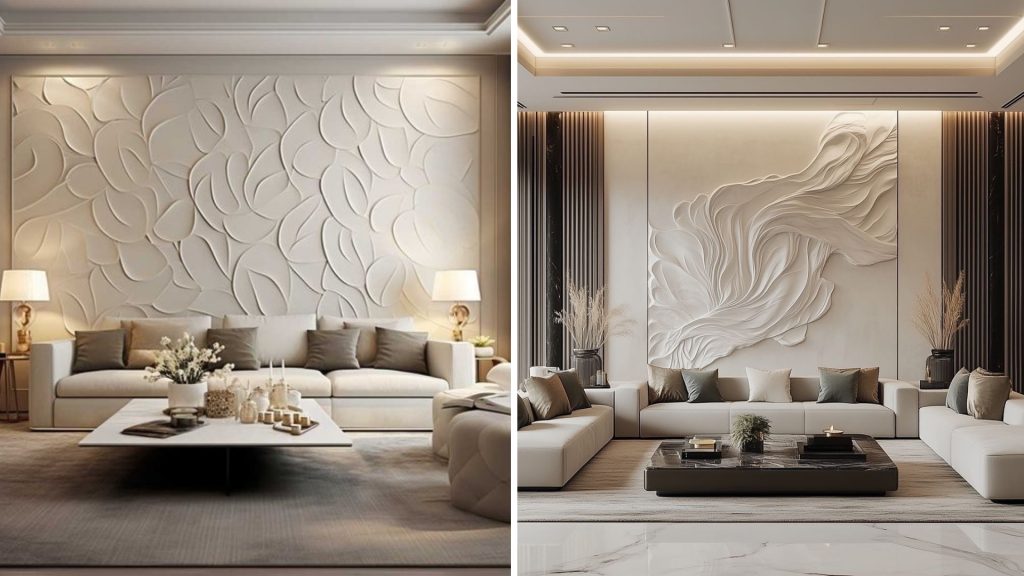
- The textured or 3D wall panel design provides an instant, powerful focal point without the need for color or additional decor. It adds artistic depth and plays with light dynamically.
- A single accent wall behind the sofa or television, using materials like gypsum, MDF, or fabric. It serves as the room’s main art piece.
- This category focuses on creating visual interest and dynamism through tactile, sculptural surfaces that play with light and shadow.
- They can be abstract, geometric, or organic in form. This style is less about a specific historical period and more about creating a modern, impactful statement.
- Common materials deployed in its making would be MDF, gypsum, recycled plastics, or concrete composites.
3. Rustic/Natural
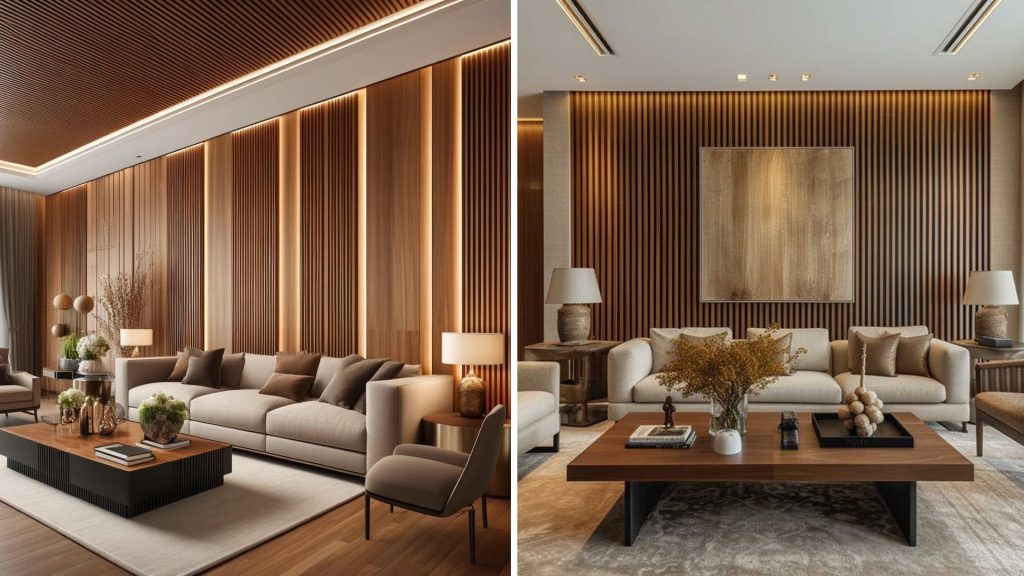
- The rustic or natural wall panelling is trending because the desire for warmth, authenticity, and biophilic design (connecting with nature) makes wood paneling a perennial favourite.
- You can apply a shiplap on a feature wall of your living room, a reclaimed wood accent behind the TV, or full-height wood slat panels to evoke warmth and texture.
- This style aims to bring the raw, authentic beauty of the outdoors inside, creating warm, inviting, and texturally rich environments with a sense of history.
- The focus is on the natural imperfections and grains of wood. Surfaces may feature knots, cracks, and saw marks for added character.
- Here, the use of reclaimed or distressed wood is highly valued for its unique patina and sustainable appeal.
4. Industrial
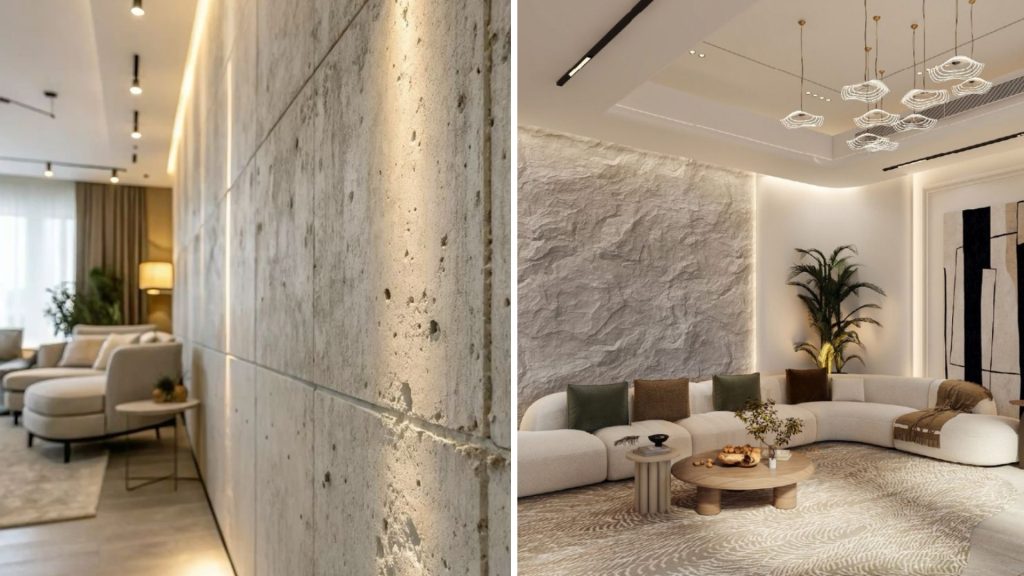
- The industrial wall panel design is highly popular in urban lofts and apartments, it delivers an edgy, architectural character.
- For your living room, faux brick or concrete panels on one wall creates an urban loft vibe which are paired with metal shelving and leather furniture.
- It is inspired by converted warehouses and urban lofts, this style celebrates an unfinished look, highlighting raw, utilitarian materials and structural elements.
- The aesthetic is driven by the inherent texture of industrial materials, such as the roughness of brick, the coolness of concrete, and the sleekness of metal.
- Designs, here, mimic functional elements like exposed brickwork, corrugated metal siding, and concrete slabs.
- Colors are derived from the materials themselves, greys from concrete, rusty reds from brick, and silvery tones from metal.
- Common materials deployed in it would be faux brick and stone veneers, concrete-look laminate or acrylic panels, and metal sheets (or panels mimicking corrugated steel, aluminium, or copper).
5. Scandinavian
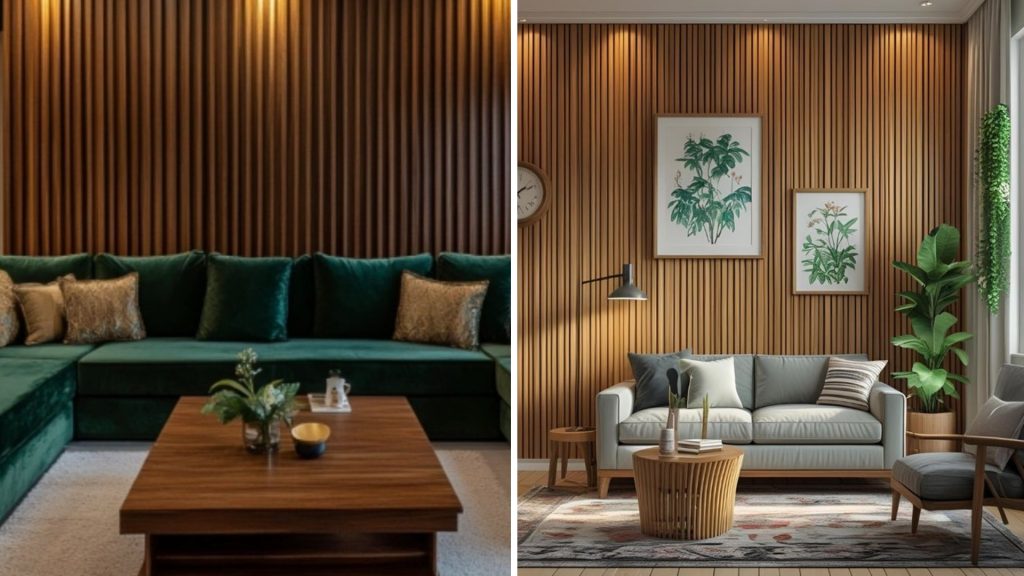
- Scandinavian wall panel design puts emphasis on light, warmth, and simplicity for a welcoming and serene environment.
- It is rooted in the principles of hygge and functionality. This style prioritizes light, airy spaces, natural materials, and minimalist forms to promote well-being and simplicity.
- The hallmark is the use of light wood tones like pine, ash, and beech. Paneling is often simple, such as vertical tongue-and-groove (often painted white) or wide, flat slats. The focus is on creating texture and warmth without visual clutter.
- Light timber, white-painted wood, and occasionally acoustic felt panels to enhance comfort and sound absorption.
- It is perfect for bedrooms, living rooms, and home offices for a calm, serene, and bright environment, especially in smaller spaces.
6. Transitional
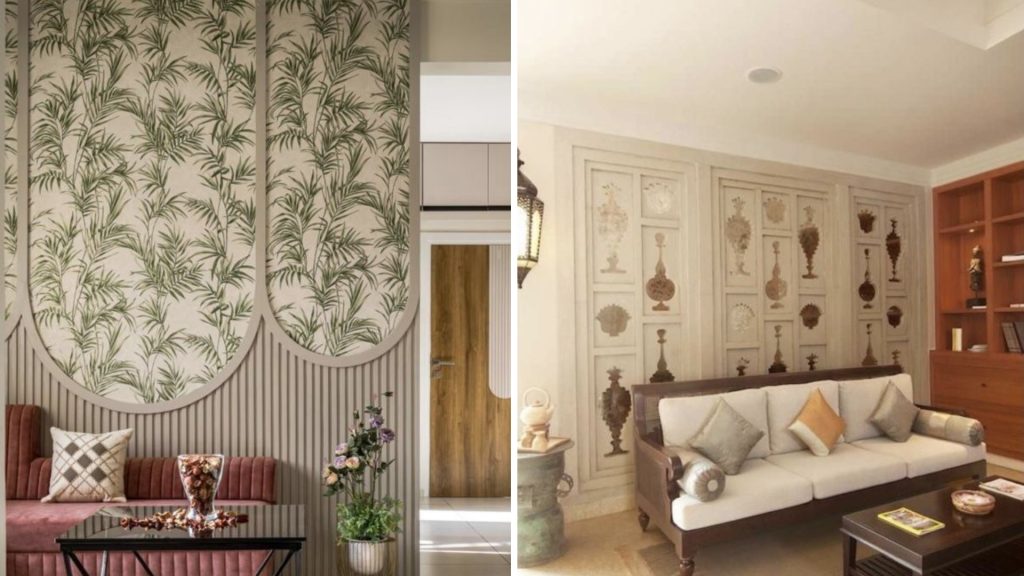
- Its versatility and broad appeal make it safe yet stylish choice. It blends the best of classic and modern.
- This style consciously merges the clean lines of modern design with the classic, refined elements of traditional style. That results in a balanced, forever aesthetic that feels both fresh and enduring.
- It often features Shaker-style paneling (a simple five-piece design), slab doors with traditional hardware, and a neutral color palette. The mouldings are typically simpler than in pure traditional design but add more warmth and detail than a strict minimalist approach.
- Common materials deployed in it would be painted MDF for wainscoting or full-wall paneling, simple wood frames, and a mix of textured wallpapers within paneled frames.
7. Japanese Inspired (Japandi)
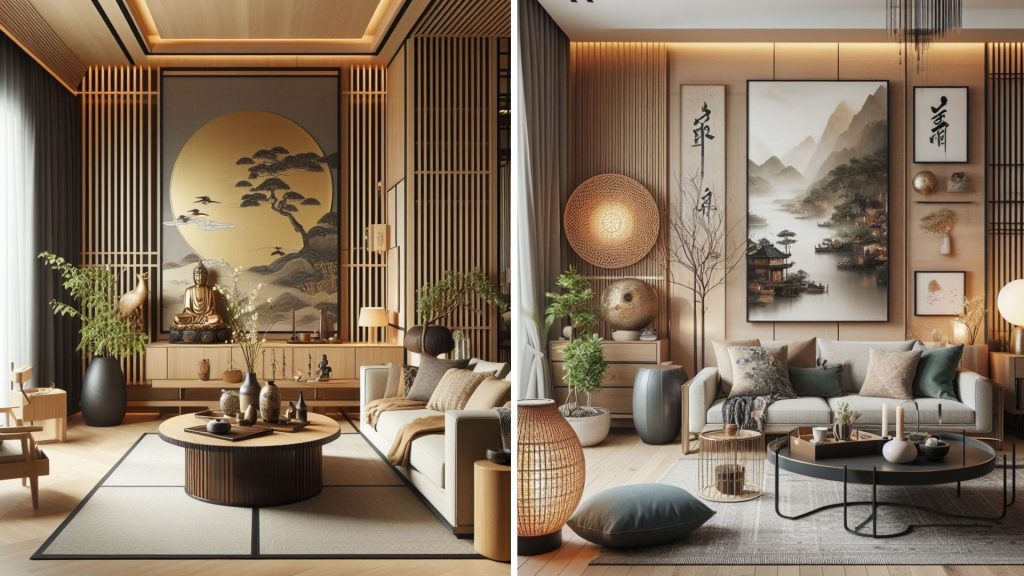
- Japanese inspired wall panel designs promote mindfulness and tranquillity, resonating with the desire for a peaceful home sanctuary.
- It features simple, linear wood slat panels (Kumiko patterns are a classic example), moveable shoji-style screens, and a muted, earthy color palette. The design is low-profile and emphasizes the beauty of the material’s grain.
- These wall panels commonly utilize materials like oak, walnut, or bamboo with a natural finish, along with rice paper and textured plaster.
8. Tropical/Biophilic
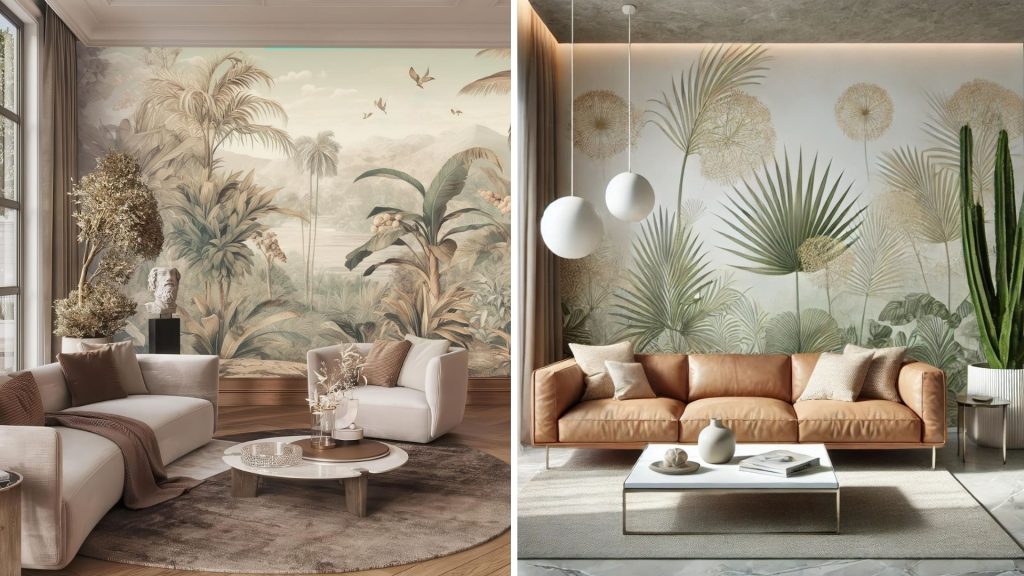
- The biophilic or tropical wall panelling aims to bring the lush, relaxed feeling of a resort into the home. It emphasizes natural materials and botanical themes.
- These panels usually feature patterns of palm fronds, tropical leaves, or bamboo.
- The use of raw, organic materials is key to achieving the authentic look.
- Even in cooler climates, it is designed to form a bright and open atmosphere.
- These wall panels commonly utilize materials like real bamboo panels, WPC Wall Panels printed with leaf patterns, and grasscloth-covered panels.
9. High Tech/Smart
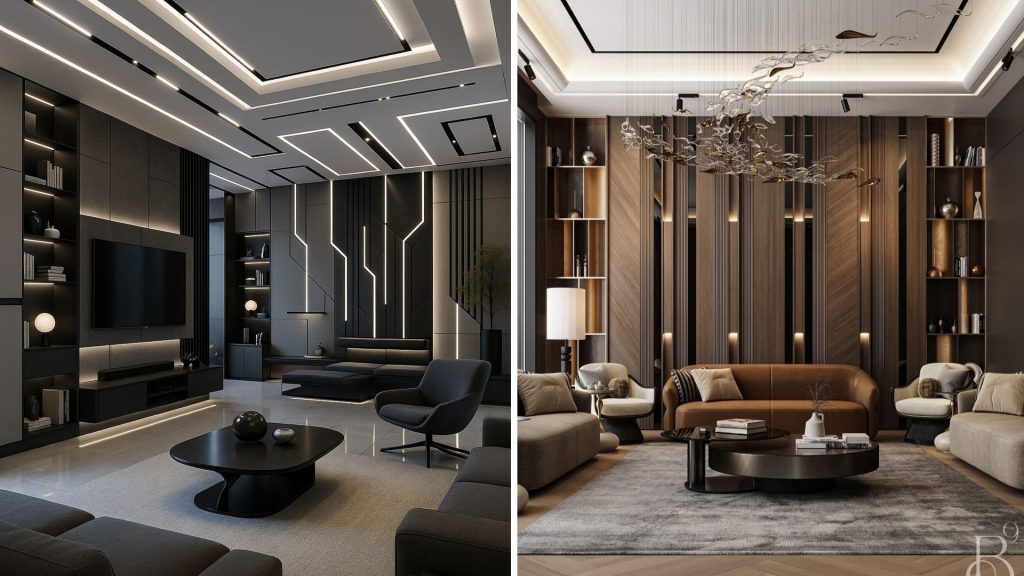
- As home technology becomes more integrated, so does the demand for wall panels that hide or incorporate it effortlessly.
- High-tech or Smart wall panel is a forward-looking style where the wall panel itself becomes a functional, integrated piece of technology, focusing on innovation and minimalist utility.
- These panels may incorporate built-in LED lighting, speakers, or even touch-sensitive controls.
- Many are part of modular systems that can be reconfigured, and offer aesthetic and functional flexibility.
- These wall panels commonly utilize materials like acoustic felt panels with integrated LEDs, magnetic wall systems that allow for easy reconfiguration, and large-format glossy panels.
10. Art Deco
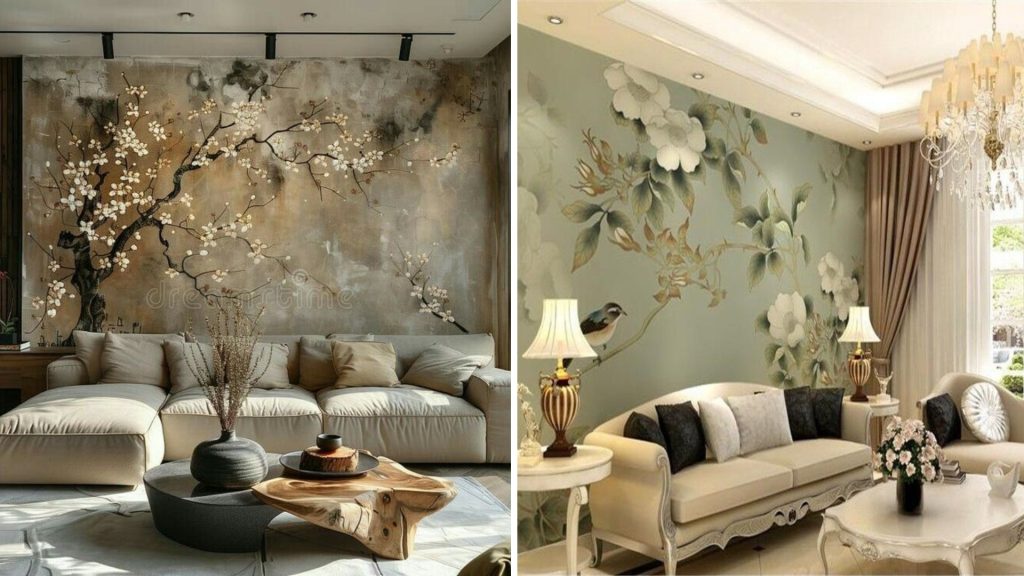
- Inspired by the 1920s and 1930s, art deco wall panel style is synonymous with glamour, luxury, and modernity. It features bold, geometric forms and a sense of theatricality.
- It uses symmetrical, repetitive patterns like sunbursts, chevrons, and zigzags.
- It generally incorporates high-gloss lacquers, mirrored or metallic (especially chrome and gold) inserts, and exotic wood veneers.
- These panels may feature stepped or radiating shapes for a dynamic sense of movement.
- The common materials include lacquered MDF, mirrored acrylic, metal inlays, and ebony or zebrawood veneers.
11. Bohemian
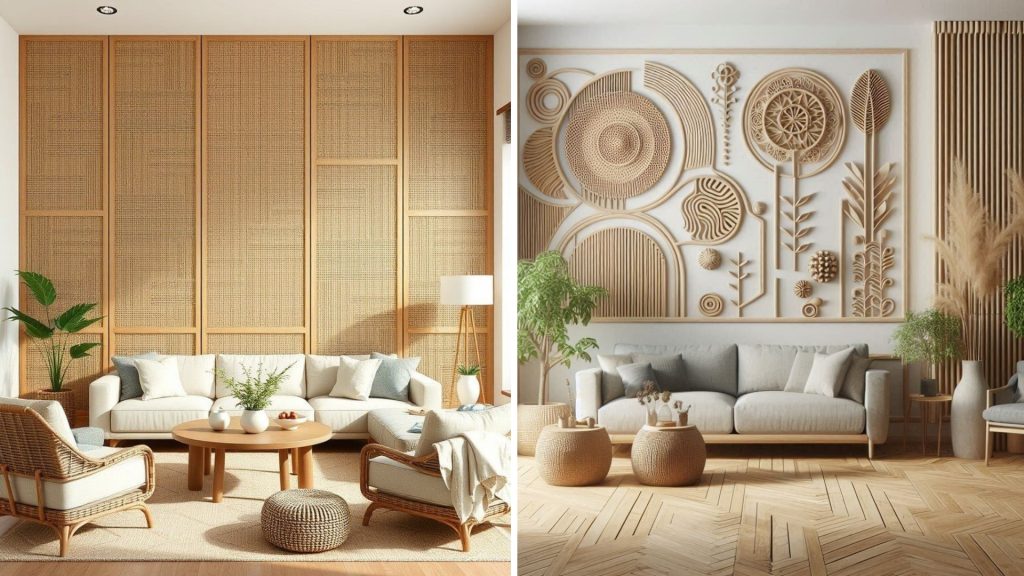
- This wall panel design is eclectic, layered, and personal. It breaks from rigid structure, embracing a mix of patterns, textures, and global influences for a creative and free-spirited look.
- The rich texture and patterns cover decorative wall panels with intricate carvings, mosaic patterns, or embossed motifs.
- To achieve its characteristic warmth and layered texture, Bohemian style frequently utilizes wall panels crafted from natural materials such as cane, rattan, and bamboo.
- Talking of the color palette, they tend to use deeper, warmer colors and metallic accents like copper or brass inlays.
- Key materials include macrame, carved wood or MDF, cane webbing, and ceramic or terracotta tiles, all used as forms of wall paneling.
Cost Consideration
The cost of wall panelling varies significantly based on material, design complexity, and installation.
- Material Cost: PVC Wall Panels and standard MDF panels are generally at the more affordable end of the spectrum. The PVC Wall Panel price is often determined by thickness and design. Natural Wood Wall Paneling and custom WPC Wall Panels represent a higher investment.
- Installation Cost: Simple, interlocking systems like many PVC Wall Panels can be DIY projects, reducing cost. Complex designs or large areas typically require professional installation, which adds to the overall budget.
- Value: When considering Living room wall panels, view them as a long-term investment that enhances both the daily enjoyment and potential resale value of your home.
Key Types of Wall Panels for Your Home
Understanding the key types helps in selecting the right panel for each application.
- Living Room Wall Panels: For Wall panelling designs living room, large-format 3D panels, elegant wood slats, or classic raised panels are excellent for creating a feature wall behind a sofa or television.
- Moisture-Resistant Panels: PVC Wall Panels and WPC Wall Panels are the definitive choice for humid environments like bathrooms and kitchens due to their impervious nature.
- Decorative Wall Panels: This broad category includes all panels where the primary function is aesthetic enhancement. From laser-cut metal to fabric-covered acoustic panels, Decorative Wall Panels are used to express personal style and improve a room’s ambiance.
- Functional Panels: These include acoustic panels for sound absorption in home theaters or offices, and insulated panels for improving a room’s energy efficiency.
How Can Opalspace Help You?
Right from modern minimalist to rustic warmth, the right wall panels fundamentally transform a space. As your interior design partner, we cut through the options to select the perfect style and material, be it Wood Wall Paneling or practical PVC panels, tailored to your vision. Our comprehensive home interior design service handles everything from initial concept to flawless installation, ensuring a cohesive and stunning result throughout your home. Let’s build your ideal space together.


